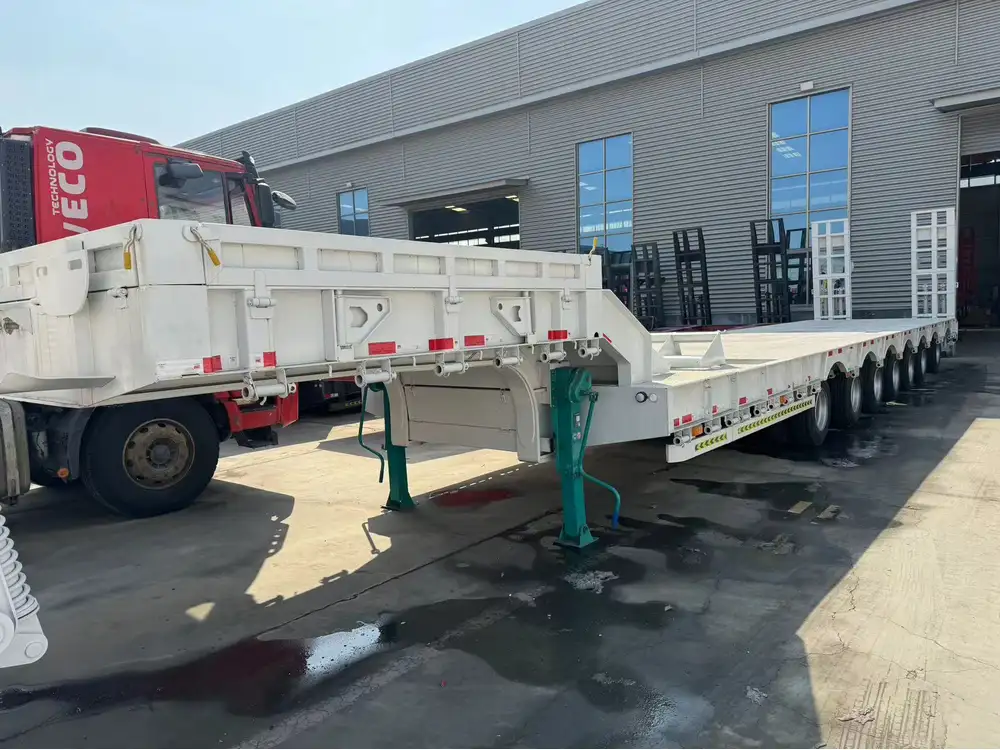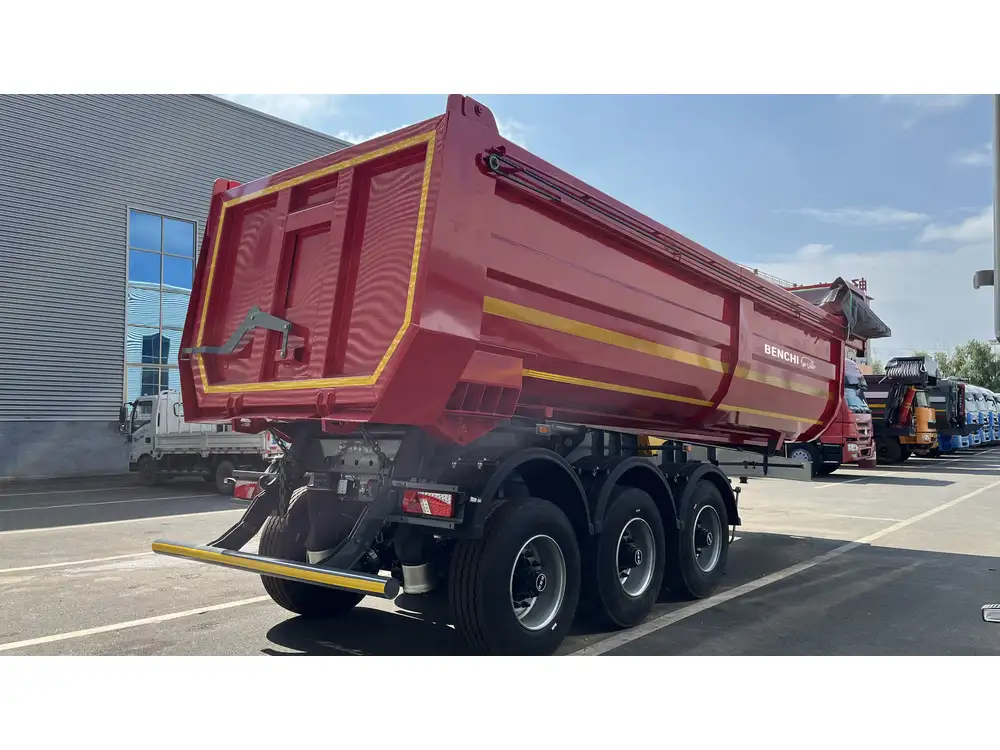Understanding the mechanics of how a semi truck hooks up to a trailer is crucial in mastering the transportation industry. This process ensures efficiency, safety, and ease of operation when transporting goods. In this article, we dissect the intricacies involved in this part of logistics, providing you with an informative roadmap to navigate this essential skill.
Table of Contents
- Introduction to Semi-Trailer Hookup
- Key Components of the Hookup Process
- 2.1 The Fifth Wheel
- 2.2 The Kingpin
- 2.3 Trailer Landing Gear
- 2.4 Air and Electrical Connections
- Step-by-Step Hookup Procedure
- Common Challenges and Solutions
- Best Practices for Safety and Efficiency
- Conclusion
Introduction to Semi-Trailer Hookup
The ability of a semi-truck to connect with a trailer is fundamental to freight operations. A semi-trailer, distinguished by its unique design where it has wheels at the back and is supported by the tractor unit, relies on an intricate system of locks, levers, and connectors. This section provides insights into the core mechanical aspects that facilitate this engagement.

Key Components of the Hookup Process
2.1 The Fifth Wheel
The fifth wheel is a pivotal component that acts as the connector between the semi-truck and the trailer. This plate-like structure, located at the rear of the truck’s tractor, allows for vertical and horizontal movement, making it easier for the driver to maneuver when positioning the trailer for attachment.
- Specifications:
- Material: Typically made of high-strength steel.
- Weight Capacity: Ranges from 20,000 to 30,000 pounds, although heavy-duty options exist.
- Adjustment: Many fifth wheels are adjustable, allowing for various trailer heights.
2.2 The Kingpin
Attached to the front of the trailer, the kingpin is a metal pin that fits into the fifth wheel’s coupler. This connection is what secures the trailer to the tractor.
- Dimensions:
- Standard Size: Most commonly, kingpins measure 2 inches in diameter.
- Shape: The pin has a tapered design (or a bow) to aid in easy connection.

2.3 Trailer Landing Gear
Landing gear is essential for supporting the trailer when disconnected from the semi-truck. Generally, it consists of retractable legs that stabilize the trailer during loading and unloading.
- Operation:
- Manual or Electric: Power options are available for ease of use.
- Load Capacity: Can vary but typically supports a weight range similar to the trailer’s maximum gross weight.
2.4 Air and Electrical Connections
Ensuring operational connectivity, air and electrical connections play a crucial role. The air supply activates the trailer’s brakes, while electrical connections power lights and other necessary functions.
Air Lines:
- Function: Control parking brakes and brake lights.
- Type: Typical setups include two air lines – one for service brakes and one for emergency brakes.
Electrical Connector:
- System: Most commonly a 7-way connector.
- Functionality: Provides power to the trailer’s brake lights, turn signals, and other electrical components.
Comparison Table of Key Components
| Component | Description | Purpose |
|---|---|---|
| Fifth Wheel | Plate on tractor unit | Connects tractor and trailer |
| Kingpin | Pin on trailer | Secures trailer to tractor |
| Landing Gear | Retractable legs | Stabilizes the trailer |
| Air/Electrical Lines | Hoses and connectors | Provide brake/lighting systems |

Step-by-Step Hookup Procedure
Now that we have discussed the essential components, let’s navigate the step-by-step process of hooking up a semi-trailer to a tractor.
3.1 Positioning the Truck
- Ensure Alignment: Drive the tractor into position at a shallow angle to the trailer to facilitate the hookup.
- Check the Trailer: Inspect the trailer for any obstructions or damages that may hinder the hookup process.
3.2 Lowering the Trailer
- Adjust Landing Gear: Lower the landing gear to the ground until sturdy.
- Verify Level: Ensure the trailer plate is at a compatible height to dock with the fifth wheel.

3.3 Connecting the Fifth Wheel
- Engagement: Slowly back the tractor towards the trailer, ensuring the fifth wheel aligns directly underneath the kingpin.
- Locking Mechanism: As the pin engages, a locking mechanism will activate (often audibly) to secure the connection.
3.4 Securing Air and Electrical Connections
- Air Lines: Connect the service and emergency air hoses from the tractor to the respective ports on the trailer.
- Electrical Connection: Plug the 7-way electrical connector into the trailer, ensuring secure attachment.
3.5 Final Checks
- Visual Inspection: Conduct a final inspection to ensure all connections are secure and functional.
- Test Brake Lights: Perform a functionality test of the lights and brakes by engaging the tractor’s controls.

3.6 Towing the Trailer
- Clear the Area: Ensure that the area is clear before proceeding.
- Perform a Crossover Test: (Functionality check) test the brakes gently before driving off.
Common Challenges and Solutions
Even seasoned drivers encounter obstacles during the hookup process. Below are some common issues and their corresponding solutions.
| Issue | Solution |
|---|---|
| Misalignment | Adjust tractor position and check height of the trailer. |
| Broken Air Lines | Replace damaged hoses before continuing. |
| Electrical Malfunctions | Inspect connections and replace faulty components. |
| Stuck Kingpin | Jack up the trailer or use a lubricant to ease the kingpin out. |
Best Practices for Safety and Efficiency
Practicing safety and efficiency during the hookup and towing process can lead to smoother operations. Here are several best practices to adhere to:
- Daily Equipment Checks: Conduct thorough inspections of both tractor and trailer equipment.
- Proper Training: Ensure all drivers are adequately trained in the hookup process.
- Use of Reflective Gear: Wear high-visibility clothing during roadside operations to enhance safety.
- Height Adjustments: Be aware of the trailer height and adjust on-the-go to ensure compatibility with various tractor types.

Checklists for Hookup Preparation
Having a checklist can help reinforce best practices:
Before Hookup:
- Inspect and clean the fifth wheel.
- Check kingpin for damage.
- Ensure landing gear is operational.
- Inspect air lines for wear and leakage.
During Hookup:
- Confirm alignment before backing up.
- Double-check air and electrical connections.
- Ensure locking mechanisms are engaged.
After Hookup:
- Conduct functionality tests for lights and brakes.
- Adjust side mirrors for improved visibility.
- Confirm load distribution and weight legality for travel.
Conclusion
The process of hooking up a semi-trailer to a tractor is not only fundamental, but it encapsulates the essence of what efficient freight transportation entails. Understanding the key components, following a methodical step-by-step procedure, and anticipating possible challenges are vital to ensuring a hassle-free operation. It’s essential to cultivate best practices that prioritize safety and efficiency. With this guide, we empower manufacturers, truck drivers, and logistics personnel to elevate their understanding and operations within the transportation sector. By continuous learning and adherence to established protocols, the industry can thrive on safety, reliability, and operational excellence.



